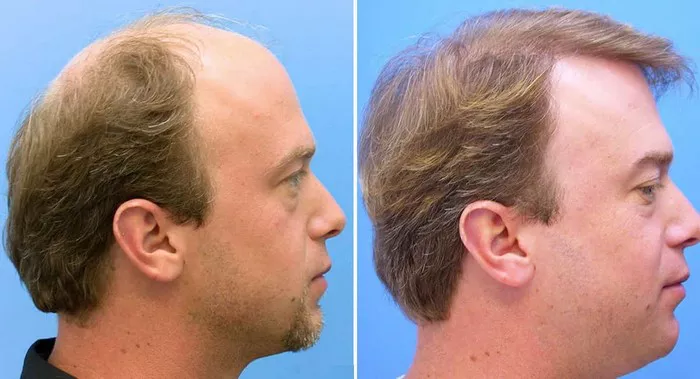When it comes to hair transplant procedures, one burning question that often plagues individuals seeking a luscious mane is, “How Many Hair Transplant Procedures Are Needed?” This concern is entirely valid, as the journey to restoring a full head of hair can be both emotionally and financially significant. In this comprehensive guide, we will delve deep into this topic, providing insights, statistics, and expert opinions to help you make an informed decision.
Understanding the Basics of Hair Transplants
A hair transplant is a surgical procedure aimed at redistributing hair follicles from one part of the body (usually the back or sides of the head) to areas where hair loss or thinning has occurred. This technique, primarily used to combat male pattern baldness, is known as follicular unit transplantation (FUT) or follicular unit extraction (FUE).
The Factors Determining the Need for Multiple Procedures
Several factors play a crucial role in determining how many hair transplant procedures one may need:
1. Severity of Hair Loss
The extent of your hair loss is a pivotal factor. If your hair loss is minimal, you may require only one procedure to achieve satisfactory results. However, severe cases may necessitate multiple sessions to achieve the desired density.
2. Hair Type
The texture and thickness of your hair also influence the number of procedures needed. Individuals with thicker, coarser hair may achieve better coverage with fewer transplants compared to those with fine hair.
3. Desired Hair Density
Your personal preference for hair density is another factor. Some individuals may be content with a moderate increase in hair density, while others may seek a fuller head of hair, requiring additional sessions.
Statistics on Hair Transplant Procedures
Based on recent statistics, it’s quite common for individuals to undergo more than one hair transplant procedure:
1. Multiple Sessions – The Norm
Studies reveal that approximately 70% of hair transplant patients opt for a second procedure, primarily to enhance density or address areas that may not have received adequate coverage during the first session.
2. Increased Satisfaction
Patients who choose to undergo multiple sessions report higher satisfaction levels with the final results, as the procedure allows for gradual hair restoration.
3. The Average Number of Procedures
On average, most patients require two to three hair transplant procedures to achieve their desired outcome. However, this can vary significantly based on individual factors.
Factors Influencing the Number of Procedures
The following factors influence the number of surgeries:
1. Hair Loss Progression
Hair loss is a dynamic process. It’s important to consider whether your hair loss is likely to progress further. Your surgeon will assess this during the consultation to help determine the number of procedures needed.
2. Budget Considerations
The cost of hair transplant procedures can add up. Patients should carefully evaluate their budget and priorities when deciding on the number of sessions required.
3. Healing and Recovery Time
Each hair transplant procedure requires a recovery period. The time between sessions can range from several months to a year, so scheduling multiple procedures should be factored into your plans.
The Benefits of Multiple Hair Transplant Procedures
Here are the benefits of multiple hair transplant surgeries:
1. Achieving Natural-Looking Results
Multiple procedures allow for a gradual and natural-looking transformation. Hair can be strategically placed, ensuring an aesthetically pleasing outcome.
2. Addressing Progressive Hair Loss
For individuals with ongoing hair loss, multiple procedures can help maintain a consistent appearance, keeping up with the progression of hair loss.
See Also: How Much Is a 2000 Graft Hair Transplant: A Full Guide
Conclusion
In conclusion, the number of hair transplant procedures needed varies from person to person, dependent on factors like the severity of hair loss, hair type, desired density, and budget considerations. It’s crucial to consult with a qualified hair transplant specialist who can assess your unique situation and provide personalized recommendations.
Remember that patience is key on this journey, and multiple procedures may be a viable option for achieving the lush head of hair you desire. Be sure to discuss all your concerns and expectations with your surgeon, and you’ll be well on your way to a satisfying and successful hair transplant experience.


